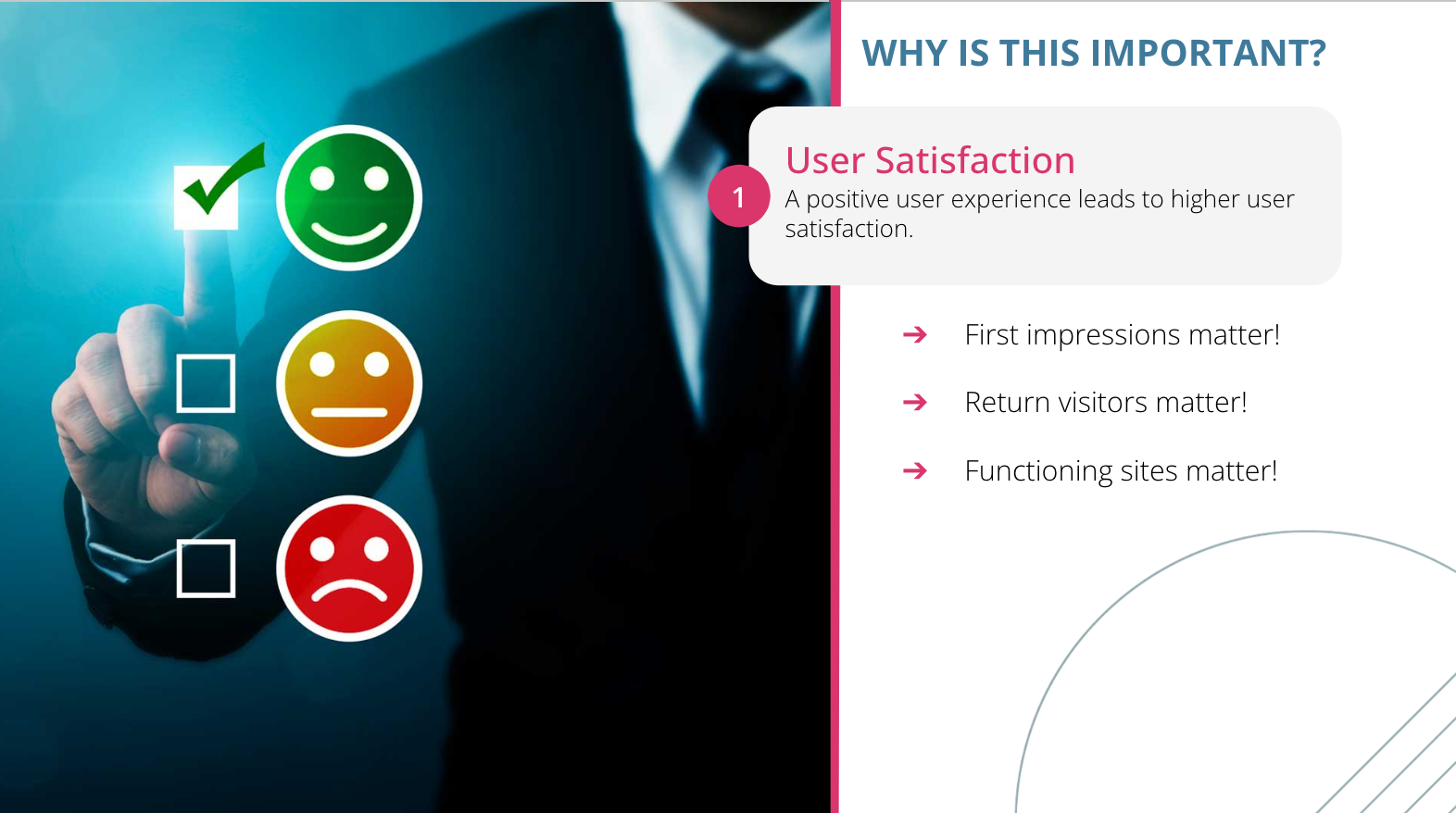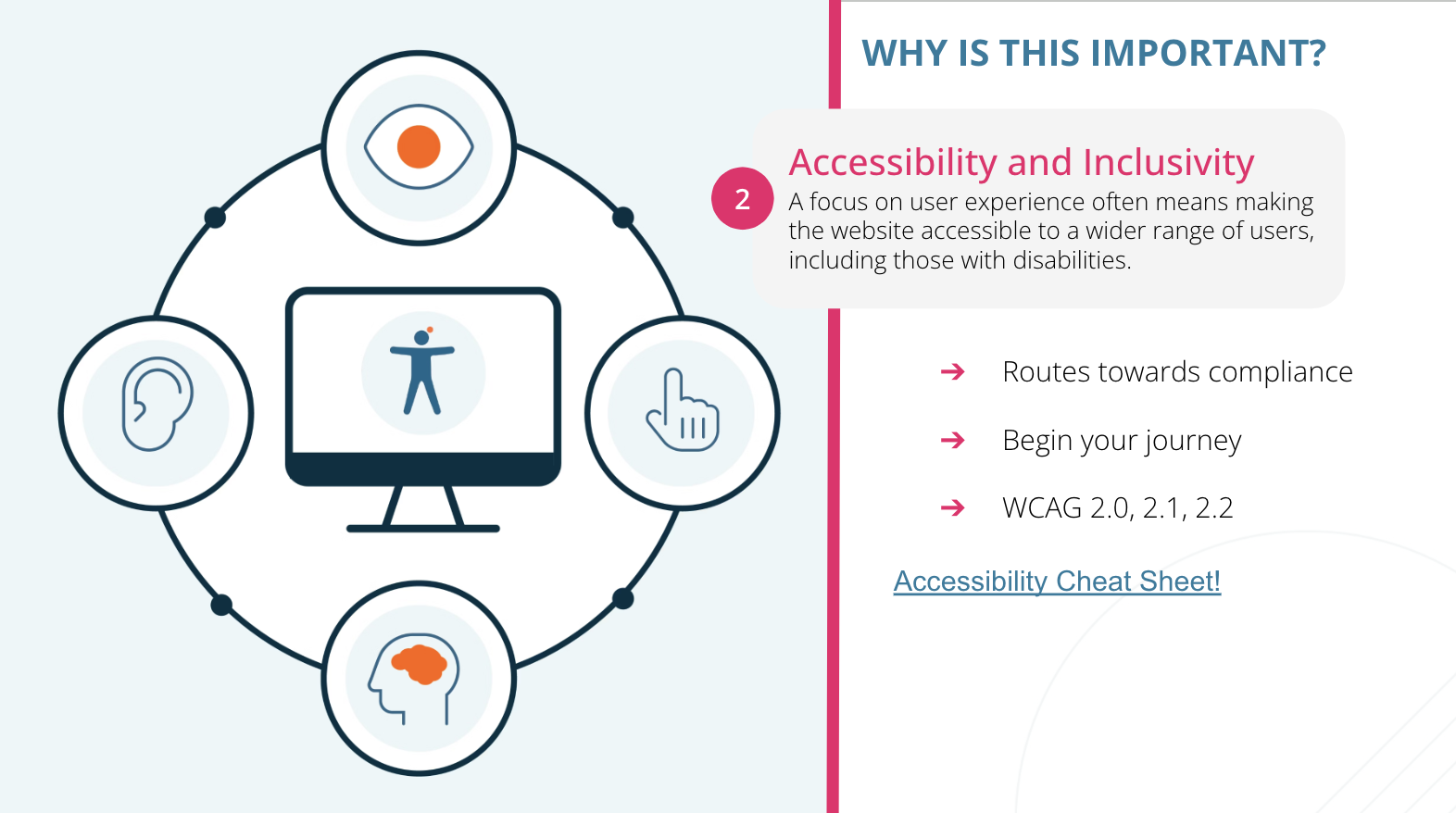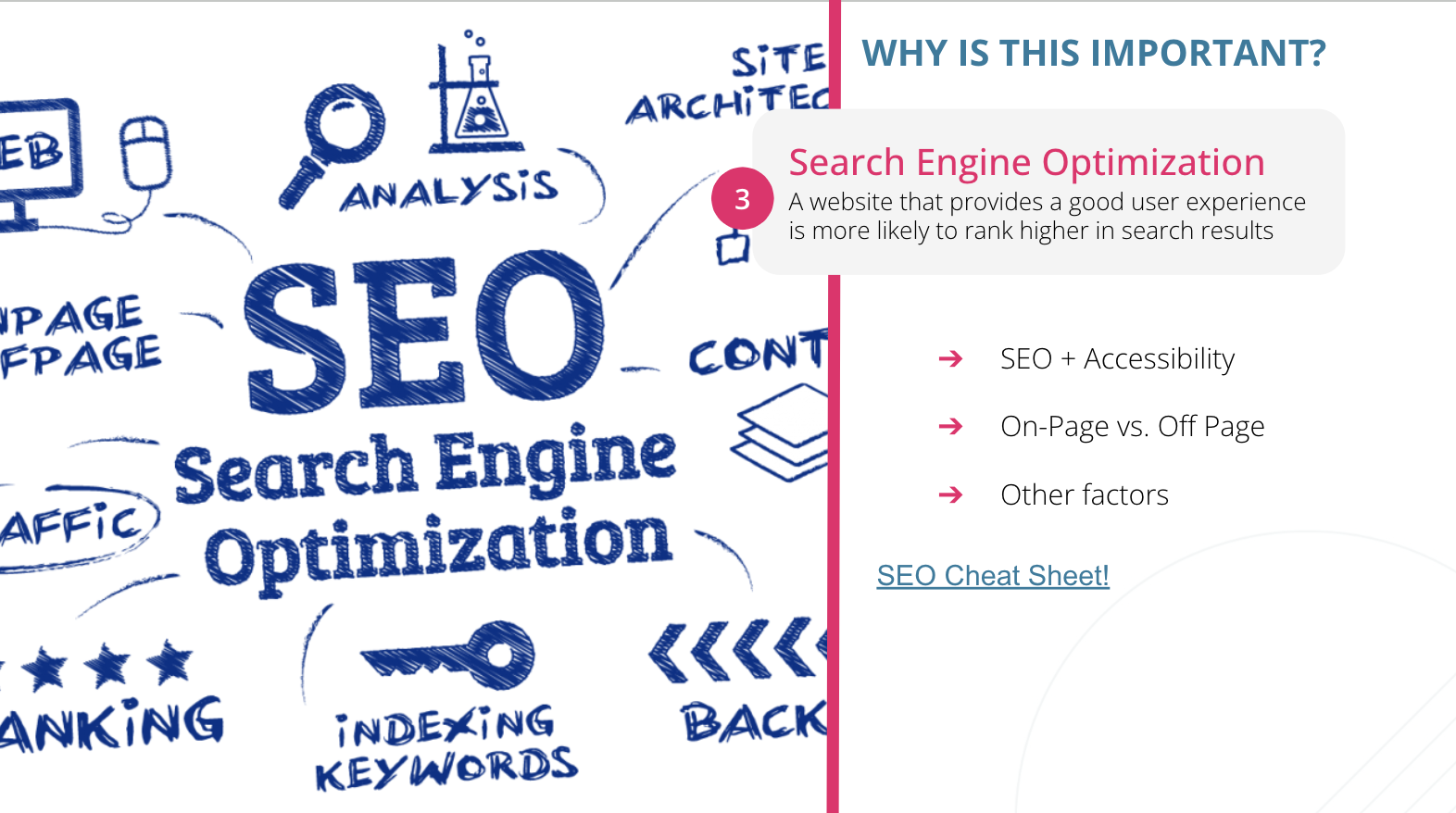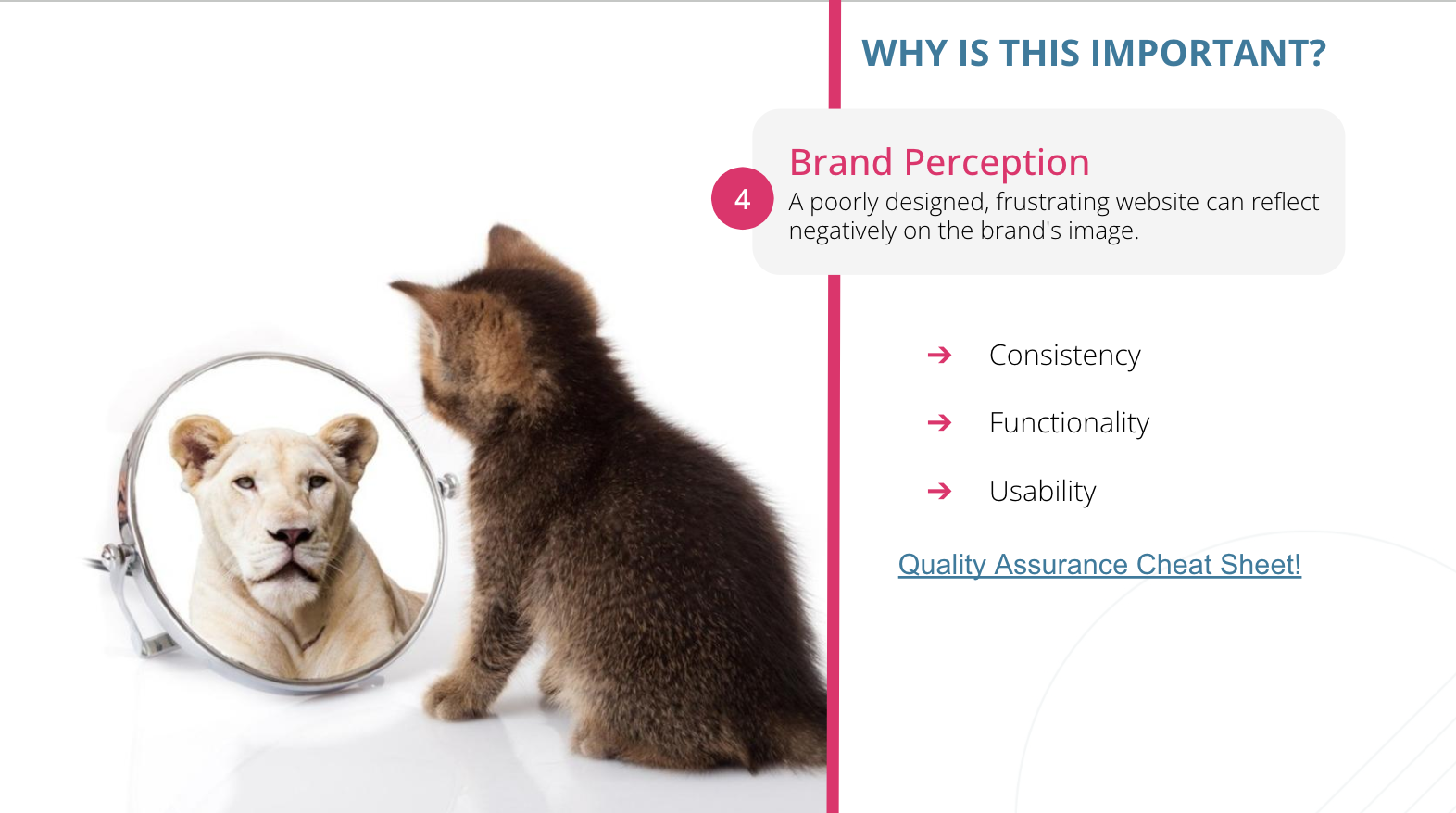We recently hosted a webinar on "The Power of a Well-Managed Website,” which gave attendees insights into the intricacies of effective website management.
With expert perspectives from Hannon Hill’s Senior Sales Engineer, Graham Lewis, and Sterling Rose of Monsido, the session explored the importance of user satisfaction, accessibility, SEO, brand perception, and maintaining a consistent brand identity.
The following conveys some highlights of the webinar. We encourage you to view the presentation on demand to get a complete understanding on what it means to have a well-managed website.

Lewis highlighted the direct correlation between user satisfaction and the time users spend on a website.
Engaged users not only spend more time but also have higher chances of conversion.
Furthermore, a satisfying user experience enhances SEO performance, given Google's emphasis on user experience in ranking.
Lewis underscored that many elements of a well-managed website, whether related to brand or SEO, revolve around user satisfaction.
Rose expanded on this by emphasizing the website's role as the first introduction to an institution, especially for prospective students and their parents.
To encourage return visits, it's crucial to have a site that functions efficiently with content that's both accessible and easy to locate.
Ultimately, achieving this ensures overall user satisfaction, which is the cornerstone of a well-managed site. Platforms like Cascade CMS can facilitate this seamless user experience by streamlining content management.

Lewis emphasized the criticality of website accessibility for legal compliance, like the Americans with Disabilities Act, and its benefits for SEO and technology alignment.
Rose elaborated on the shared responsibility between CMS, hosting providers, and content teams. He stressed that accessibility is an ongoing journey. Common oversights include non-unique page titles and incorrect header structures.

Lewis highlighted the significance of SEO for a positive user experience and the role of content contributors in boosting it.
Rose further explored the connection between SEO and accessibility, noting that enhancing one often benefits the other. He emphasized critical on-page SEO factors, including metadata tags, URL structure, and coherent header structures, and the importance of internal links.
Rose cautioned against SEO pitfalls, such as misusing tags that hinder search engine visibility and keyword stuffing, which can lead to penalties.
He underscored that while keywords are essential, over-saturation can be counterproductive.
For higher-ed marketers, understanding these insights and applying them through platforms like Cascade CMS is pivotal for improving online visibility and user experience.
 -
-
First impressions matter. A vibrant, clean, and user-friendly website establishes an immediate positive emotional connection, fostering trust. If visitors have a negative response, they likely won't return or engage further.
Quality control plays a pivotal role. As the number of content contributors grows, maintaining consistency becomes challenging.
Monitoring for issues like broken links, outdated information, or spelling mistakes is essential to uphold a brand's image.
Performance metrics like site speed and uptime are vital, along with ensuring content is accessible and readable to the target audience.
Cascade CMS can be leveraged to streamline these processes.
They should provide dashboards to guide users, automate content checks, offer prompts, and even send daily content reports.
As managers, supporting content contributors and ensuring they have the necessary resources is crucial to maintaining a positive brand perception online.
The importance of maintaining a consistent brand throughout your website cannot be overstated. A content management system can play a pivotal role in ensuring streamlined content management.
While Cascade CMS offers features like setup blocks for easy updates to logos, colors, and navigation—these changes seamlessly reflect across the site.
Shared content blocks are also noteworthy. These tools allow for centralized content updates, ensuring all users access the most recent version, which proves beneficial when content is reused in different website sections.
Lewis highlighted the value of workflows, especially for institutions with multiple content contributors. Effective workflow management can help in setting up approval layers, ensuring that content adheres to brand guidelines and voice.
Interestingly, a quick poll indicated room for improvement in website management amongst higher-ed web and marketing professionals.
Lewis and Rose have shared invaluable insights tailored for those in higher education marketing and web management.
The "Power of a Well-Managed Website" webinar is now up and available for on-demand viewing.
Dive into essential facets of website management, touching on user satisfaction, SEO best practices, brand perception, and ensuring consistency.
Stay ahead in your higher-ed marketing journey and make the most of your website.
Are you in the market for a new CMS and ready to foster collaboration and effective communication within your team?
Fill out the form below and let us know how we can help.
Last Updated: Nov 2, 2023 11:00 AM